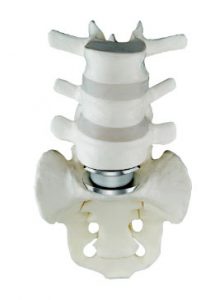Artificial Disc Replacement Surgery
For Dynamic Stabilization And Back Pain Relief
Building back pain may be due to a degenerated disc. When the disc is carried out and considered to be the cause of the patient’s low back pain, a surgical fusion of that disc space has traditionally been the way to help the patient’s pain. However, with fusion, the movement between two adjacent vertebral levels is reduced, thus creating the disc level above and below to “make up” for that lost movement, ultimately leading to improved stress on the adjacent levels, and accelerated degeneration of the adjacent levels. The goal of the artificial disc replacement surgery is to avoid this cascade of degeneration and to maintain motion (called arthroplasty).

Patients may want to have an artificial disc replacement surgery rather than a fusion operation if they wished to maintain the motion of the disc space which is making their pain.
Before the operation begins, the anesthesiologist will put the patient to sleep. A general surgeon will often prepare the approach to the spine made through the abdomen for the neurosurgeon. At this point, the neurosurgeon removes the disc material and implants the artificial disc. After doing so, the wound is closed and the patient is taken to the recovery room.
Patients have generally discharged home anywhere between one to four days following surgery. Patients must keep the wound clean and dry and follow-up in the office in about seven to ten days.
Potential risks for the surgery include bleeding, infection, injury to nerves, injury to arteries and veins running in the area of the surgery, and, in men, a small risk of retrograde ejaculation.